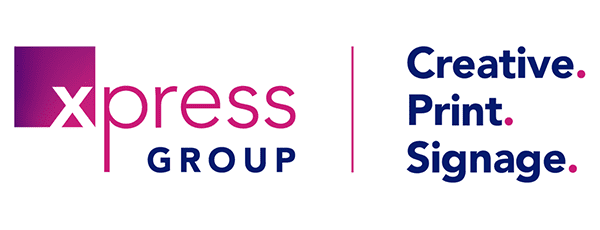
20 Mar Effective Signage and Wayfinding: Five Expert Tips
Signage and Wayfinding: Best Practices for Businesses
With decades of experience, Xpress Group offers five critical best practice tips to get everything right.
Have you seen the signs of…? Well, everything? Indeed, you have.
In public areas, on every road and street, and even at the top of a remote hill on a country walk, there’s a helpful wooden sign with an oak leaf showing your correct direction of travel and the distance to get there. Set up camp at either of the poles and you may avoid signage. Otherwise, as a consumer and business owner, signboards, hoardings, markers and placards not only provide essential information, they’re also a highly effective way to embed and reinforce your branding.
A Quick Definition or Two
As you know, although general signage and wayfinding signs are part of the same concept, they do different jobs:
- Signs inform, instruct, guide, warn, advise, promote and sell.
- Wayfinding signs tell us where we are, show us where to go, and reassure us that we’re going in the right direction.
Nevertheless, despite these distinctions, they can both be highly effective branding and marketing tools in an ideal world. And, as such, in our opinion, they should be implemented according to best practice guidelines. You want your investment in signage to work hard and deliver a return, and we’re happy to offer you the benefit of our experience.
Here are five proven techniques to build some firm foundations:
1. Define Your Goals
What precisely do you want to achieve, and how will you measure its success? Consider who will see your signage, their needs and wants, and how often they will encounter it. Also, consider how long your target market will, on average, be looking at it.
For wayfinding signs, you will no doubt want mainly to remove travellers’ confusion and reduce their stress in an unfamiliar environment. Alternatively, you may wish to draw foot traffic to a new product line in a retail environment. There’s a handy acronym: Specific, Measurable, Achievable, Relevant and Time-bound. What are your SMART guidelines?
2. Location (Location, Location)
Where are you going to place your signage?
- At a “point of transit” – or where people are coming and going more or less without stopping. Examples of signs here could be promotions, reminders, or maps. You’ve got a matter of seconds to convey a quick, clear message.
- At a waiting room or waiting space – people are hanging around here, waiting to do something or go somewhere. You have slightly longer to catch their attention, so it’s worth thinking about somewhat more in-depth, scrollable content or repeating it in rotation to enable your audience to take it on board.
- At a point of sale – they’re captive here; not going anywhere for a few minutes. To encourage a purchase decision, you’ll benefit from strong visuals, special offers or discounts, and strong calls or action
3. Get the Visuals Right
We could create an entire piece about this topic but in a nutshell, you recognise, as much as we do, this immutable fact:
Humans process images super-fast. Words – not so much. Fabulous visuals, even on wayfinding signs, attract notice immediately: the user will spot your branding and colours at 50 or more paces. Contrasts are good. For example, dark lettering on a light background and vice versa. It’s best not to use similar hues next to each other as people’s brains won’t compute this colour confusion particularly well.
Mostly, we read from left to right, so put your image first, then your text next to it. Contact Xpress Group for expert advice on your visuals.
4. Get the Words Right
Yep, it’s about copy, too. What are you mainly trying to say? Now, refine it. Pair it down to precisely what will get the message across. And no fluffy stuff. Or, spelling and grammatical errors, at all, ever. Plus, avoid jargon at all times.
The 3 x 5 rule for signs is good. This means that your content should contain three lines with five words or five lines with three words.
You could:
- Think outside the box with something to seize people’s attention
- Use numbers; they’re easier to digest than letters
- Ask a question. Avoid anything too cheesy or obvious, but a good call to action could interest your future customers. For example, “Do you realise you’ve just walked past the best coffee shop in Slough?”
5. Keep it Simple – And Consistent
Finally, and this applies to almost everything in life: less really IS more. We’re back to your goals and objectives here. Swerve any chance of confusion with ONE critical communication per sign or wayfinding sign. And, the same clear, unfussy fonts and typefaces, as well as “clean” logos, graphics or images.
This way, you can maintain a consistent visual and textual language; tone of voice applies to branding overall, not just the words. You’re also repeating this across several locations without literally repeating it – if you see what we mean.
Final Thoughts from Xpress Group
- Does signage have near-limitless potential? Well, yes. It can be outstanding, but only If you get things right from the bottom up with the basic steps outlined above.
- Remember that your audience must “see” you a few times before the message sinks in.
- So, perhaps all of this sounds ultra-simple. In theory, it is. But there’s so much more to signage than meets the eye. While your company branding may not necessarily be up in lights, it could certainly play a key role.
